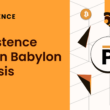The Bitcoin DeFi (BTCfi) ecosystem is rapidly on the rise. According to DeFiLlama, there’s a total of $650 million TVL on Bitcoin DeFi, with another $1.2 billion locked on sidechains. This demonstrates the building momentum behind the sector that brings DeFi solutions to the top-ranked assets.
Over the last year, the number of Layer 2s on Bitcoin surpassed 50, and the number of BTC variants crossed 20 as the total BTCfi industry continued to expand.
The rapid growth of Bitcoin Layer 2s and sidechains is a testament to the future direction of the Bitcoin ecosystem, which is to improve the functionality of the main blockchain by enhancing its scalability and programmability. However, there’s a major problem with the sector: Fragmentation.
Despite the increasing number of BTC L2s and variants, they still can’t interact with one another easily.
Swapping one variant for another on a different chain involves multiple operations and transactions, often requiring bridging back the L2 BTC to native BTC and then getting exposure to the new form of BTC.
Unfortunately, this lack of interoperability creates problems for BTCfi. The fragmentation is slowing the pace of growth for BTCfi, and it needs to be solved for the industry to reach its full potential.
That’s why we’re creating an interoperability solution for BTCfi and BTC variants, bringing the ecosystem closer together.
Bitcoin Cross-chain Swaps
Persistence One is on a mission to enable the easy trading of Bitcoin-related assets (native, wrapped, yield-bearing, BTC derivatives) across chains. We want to move Bitcoin around in all its shapes and forms.
This means that Persistence will become a major venue for swapping assets between Bitcoin Layer 2s.
While helping BTCfi grow, our interoperability solution can help solve BTCfi’s 99 problems, which include the following six ways:
- Onboarding Users
An interoperability solution would not only onboard new users to BTCfi but also seamlessly connect users across different blockchain ecosystems, creating a powerful flywheel effect. In a fragmented ecosystem, onboarding into BTCfi can be complex compared to other sectors. This is where interoperability becomes crucial, simplifying the process and driving growth.
For e.g., instead of sending Stack’s sBTC to an exchange to swap for Rootstock rBTC, a trader could simply open an intent on the Persistence One solution and let a Solver handle the entire swap without any slippage.
Streamlining the process would lower the barrier to entry and onboard more users onto more networks in BTCfi.
- Boost DeFi Activity on BTC
A more cohesive ecosystem would also boost DeFi activity on BTC.
The DeFi summer caused Ethereum to reach exceptional heights, primarily driven by traders hunting for yields on the network.
With the demand for yield came hundreds (even thousands) of DeFi protocols that offered decentralized finance activities such as yield farming, yield aggregators, lending, liquid staking, liquidity farming, DEXes, and DEX aggregators. These products saw enhanced activity after users realized they could increase their returns by participating.
If there were a more cohesive interoperability solution, the same growth or even higher would happen with BTCfi, as it would be easier to move Bitcoin around between chains as users hunt for the best returns on their BTC or BTC variants.
- Provide Good UX
Persistence One’s interoperability solution will also provide a good user experience.
Let’s face it: nobody wants to use multiple platforms for a simple cross-chain BTC swap. Depositing to a centralised exchange, waiting 30 minutes for a confirmation, and then conducting the swap is not fun or streamlined, and it would turn most people away from participating.
Instead, a platform solely focusing on BTC and BTC variants that make it easy to swap between different ecosystems would greatly improve the user experience. Intents can abstract the complexities in the UX, turning a multi-step operation into one simple step. This would also help onboard more users and boost DeFi activity on BTCfi, creating a strong flywheel effect.
- Chase opportunities
A BTCfi interoperability ecosystem would also help users access yields and chase exciting DeFi opportunities more easily.A fluid ecosystem, delivered by cross-chain BTC swaps, would make it easier to access yields.
Yields are one of the primary activities that pushed Ethereum DeFi to exceptional heights, and experts believe they will be the same catalyst for BTCfi.
Let’s say users were already generating a yield on one asset, but they noticed a higher yield on another. In this case, an interoperability solution would ensure traders don’t feel trapped on one network without utilizing multiple bridges and exchanges to swap. Instead, users could easily head to Persistence One’s interoperability platform, place their intent to swap from the original asset to the new one with zero slippage, set the desired price for the swap, and let the Solvers handle the rest.
- Create efficient markets
A more cohesive ecosystem enables the creation of efficient markets for each BTC variant, each with distinct assumptions and bridge risks that warrant different pricing. However, achieving this requires efficient markets, which are essential for growth.
An intent-based interoperability solution can drive this efficiency by enabling fast, zero-slippage swaps, thereby laying the groundwork for a more robust and dynamic BTCfi ecosystem.
Pushing The Boundaries of What’s Possible in BTCfi
In summary, an interoperability solution provides the perfect framework to push the boundaries of what’s possible in BTCfi. From onboarding users to creating more efficient markets, the intent-based interoperability solution from Persistence One will fix the 99 problems BTCfi is experiencing today.
Our solution is currently under development and is expected to be rolled out in the coming weeks. Be sure to follow our social media channels below to stay informed when it goes live.
About Persistence One
Persistence One is building a Bitcoin interoperability solution to enable cross-chain BTC swaps across Bitcoin Layer 2s.
The rapid rollout of Bitcoin L2s and side chains has led to fragmentation, hurting BTCfi scalability. Using the power of intents, Persistence One will enable users to move assets across Bitcoin Layer 2s more efficiently than traditional bridging, offering fast, secure, zero-slippage cross-chain swaps.
Twitter | LinkedIn | Telegram | YouTube | Reddit | [email protected]





